
Roots
The whisper of a curl, the gentle sway of a wave, or the joyful spring of a coil — these are not random occurrences, but rather expressions of a profound biological script written deep within our cells. To truly appreciate the remarkable diversity of textured hair, we must first journey to its origins, to the microscopic structures and the genetic instructions that choreograph its very shape. This exploration invites us to consider hair not merely as an external adornment, but as a living testament to our individual biological heritage.

Hair Anatomy and the Architecture of Curl
At the foundation of every strand lies the Hair Follicle, a tiny pocket nestled within the scalp. The shape of this seemingly simple structure holds a powerful secret to your hair’s eventual form. A follicle that is perfectly round tends to produce straight hair, as the hair shaft grows uniformly.
However, as the follicle takes on an oval or even a more flattened, asymmetrical shape, the hair it produces begins to curve. The more pronounced the oval or flat cross-section of the follicle, the tighter the curl or coil that emerges.
Beyond the follicle’s initial mold, the hair shaft itself, the visible part of your hair, plays an equally important part. This shaft consists primarily of a protein known as Keratin. Within the hair shaft, the cortex, the middle layer, holds the key to the strand’s curvature. In curly hair, the distribution of keratin within the cortex is often uneven, leading to natural bends and twists.
The fundamental shape of a hair strand is determined by the form of its follicle, a blueprint established even before birth.
The internal structure of the hair also features different types of cortical cells, specifically the orthocortex and paracortex. In straight hair, these cells are distributed symmetrically. In contrast, curly hair exhibits a non-symmetrical arrangement of these cortical cells, contributing to its curved nature.

Genetic Blueprints for Hair Shape
The variations in follicle shape and protein distribution are not accidental; they are directed by our genetic code. While no single gene solely dictates hair curl, a complex interplay of multiple genes contributes to the final hair phenotype. This is often described as an “additive” trait, meaning the degree of curl depends on the number of curly hair gene variants inherited.
One of the most widely studied genes in relation to hair curl is Trichohyalin (TCHH). This gene provides instructions for producing the trichohyalin protein, which is primarily found in the inner root sheath and medulla of the hair follicle. Trichohyalin plays a vital role in cross-linking keratin filaments, providing mechanical strength to the hair follicle and shaft.
Variations, or single nucleotide polymorphisms (SNPs), within the TCHH gene are significantly associated with differences in hair curliness across various populations. For instance, a particular genetic variant in the TCHH gene has been found to account for approximately 6% of the variance in hair curliness in individuals of European ancestry.
Other genes, such as EDAR (Ectodysplasin-A receptor) and FGFR2, have also been linked to hair texture, particularly in specific ethnic groups. The EDAR gene, for example, influences hair follicle development and has been associated with hair thickness and density, notably contributing to the coarser, straighter, and thicker hair common in East Asian populations.

How Genetic Variants Orchestrate Curl
The presence of different alleles, or versions of these genes, influences the specific characteristics of hair. For example:
- TCHH Gene Variants ❉ Certain variants lead to altered trichohyalin protein activity, impacting the cross-linking of keratin and resulting in a more elliptical hair shaft and subsequent curl.
- EDAR Gene Variants ❉ A specific variant (EDARV370A) common in East Asian populations is linked to thicker hair strands and a more circular hair fiber cross-section, promoting straightness.
- PADI3 Gene Mutations ❉ Mutations in the PADI3 gene, which modifies structural proteins like trichohyalin, have been associated with conditions like uncombable hair syndrome, characterized by extremely frizzy hair that cannot lie flat.
The interplay of these and many other yet-to-be-fully-identified genes determines the precise curl pattern, from loose waves to tight coils. The complexity means that even within families, siblings can display different curl patterns, a testament to the diverse combinations of inherited alleles.

A Unique Glimpse ❉ Hair Follicle Asymmetry in Afro-Textured Hair
A particularly compelling aspect of genetic influence on hair curl manifests in the distinct structural characteristics of Afro-textured hair. Unlike the relatively symmetrical hair follicles that produce straight or wavy hair, the follicles producing Afro-textured hair exhibit a marked asymmetry, often described as an S-Shape or a curved, almost parallel implantation to the scalp. This unique curvature of the follicle itself forces the hair shaft to grow in a spiral or helical pattern from its very inception.
This structural difference extends beyond the follicle’s external shape. Research indicates that Afro-textured hair often possesses a higher density of Disulfide Bonds within its keratin structure compared to other hair types. These strong, permanent chemical bonds contribute significantly to the hair’s coiled structure and its inherent mechanical strength. While disulfide bonds are present in all hair types, their quantity and arrangement in Afro-textured hair play a substantial part in forming the characteristic tight curls and coils.
A study exploring the microscopic characteristics of scalp hair in Ghanaian African females observed that Afro-textured hair often exhibits a medulla (the innermost layer of the hair shaft) that is thicker and correlates with shaft diameter. This internal structural variation further contributes to the hair’s coiled morphology and its unique properties. The collective evidence points to a sophisticated genetic program dictating not only the macroscopic appearance of hair but also its micro-structural composition, demonstrating a deeply rooted biological basis for the beauty of diverse hair textures.
| Gene TCHH (Trichohyalin) |
| Primary Function Forms structural proteins in hair follicles |
| Impact on Hair Curl Significant association with curl degree; variants account for a portion of curl variance |
| Gene EDAR (Ectodysplasin-A receptor) |
| Primary Function Influences hair follicle development |
| Impact on Hair Curl Associated with hair thickness and straightness, particularly in East Asian populations |
| Gene PADI3 (Peptidyl Arginine Deiminase 3) |
| Primary Function Modifies structural proteins like trichohyalin |
| Impact on Hair Curl Mutations linked to uncombable hair syndrome, affecting hair flatness and frizz |
| Gene WNT10A (Wingless-Type MMTV Integration Site Family, Member 10A) |
| Primary Function Signaling in hair follicle cycling |
| Impact on Hair Curl Variations linked to tightly coiled hair (woolly hair syndrome) |
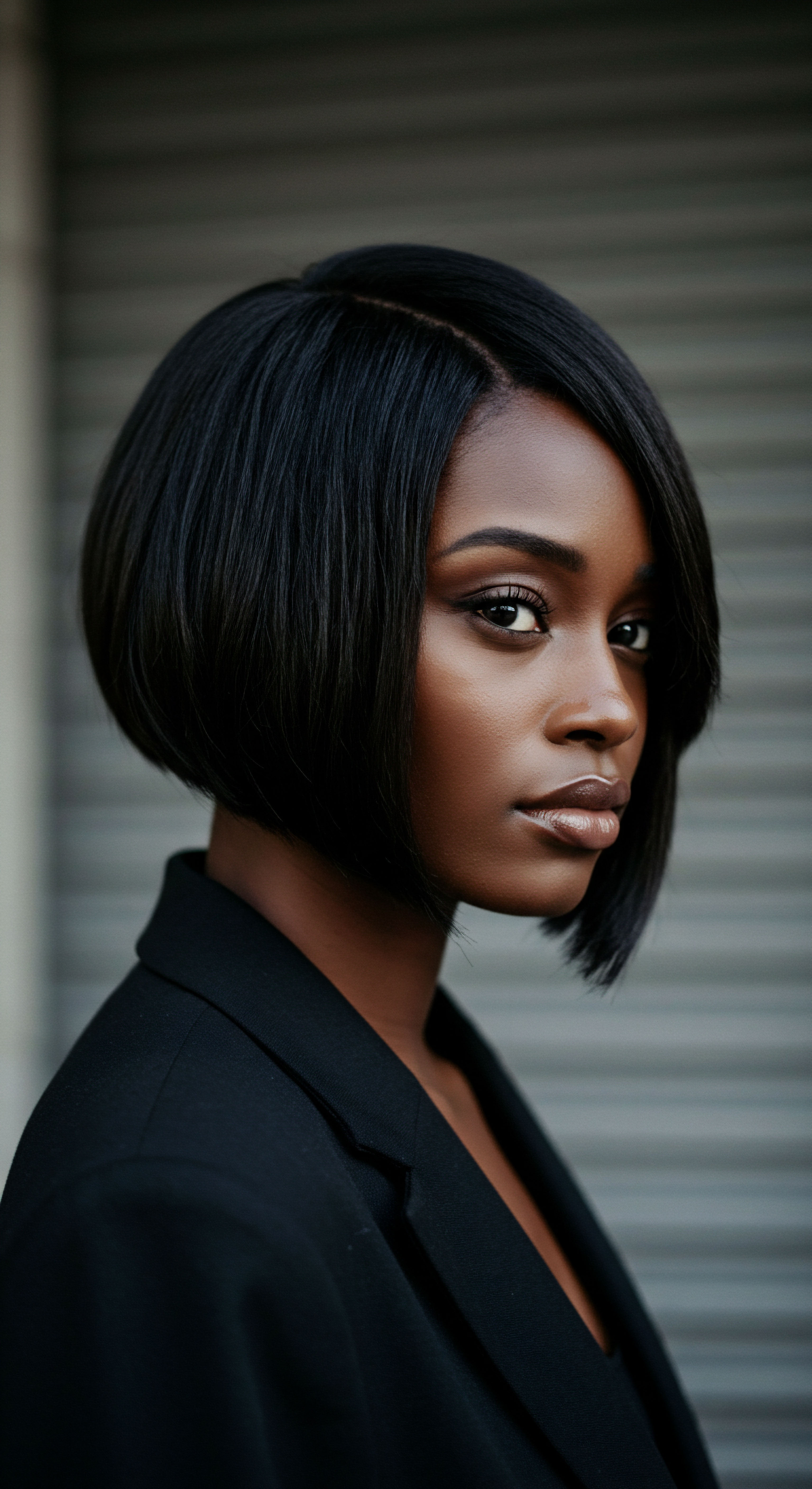
Ritual
Beyond the inherent blueprint, our daily practices and chosen care rituals become a conversation with our genetic inheritance. Understanding the biological predispositions of our hair allows us to approach its care with gentle wisdom, transforming routine into a mindful dialogue with our strands. This section explores how the genetic shape of hair influences its behavior, guiding us toward practices that honor its unique characteristics.

Responding to Genetic Porosity
The cuticle, the outermost layer of the hair shaft, consists of overlapping cells, much like shingles on a roof. In curly hair, this cuticle often tends to be naturally more raised due to the hair’s helical shape. This characteristic directly influences Porosity, the hair’s ability to absorb and retain moisture.
Hair with a more open cuticle is considered high porosity, meaning it can absorb water quickly but also lose it just as rapidly. Conversely, hair with a flatter cuticle is low porosity, resisting moisture entry but retaining it once absorbed.
Genetic variations can influence the cuticle’s natural state. For individuals with genetically predisposed higher porosity, the ritual of moisturizing becomes paramount. This involves:
- Layering Hydration ❉ Applying water-based products, followed by humectants, and then sealants to lock in moisture.
- Deep Conditioning ❉ Regular treatments with rich, emollient conditioners that can penetrate the hair shaft and provide sustained hydration.
- Gentle Handling ❉ Avoiding harsh friction that can further lift the cuticle and increase moisture loss.
Our hair’s inherited structure, particularly its cuticle, guides how it interacts with moisture, shaping our care practices.
For those with genetically lower porosity, the approach shifts. They may find heavy products build up easily, and their hair requires warmth to truly absorb moisture. A gentle steam or warm towel during conditioning can aid product penetration, allowing the hair to receive the hydration it needs without becoming weighed down.
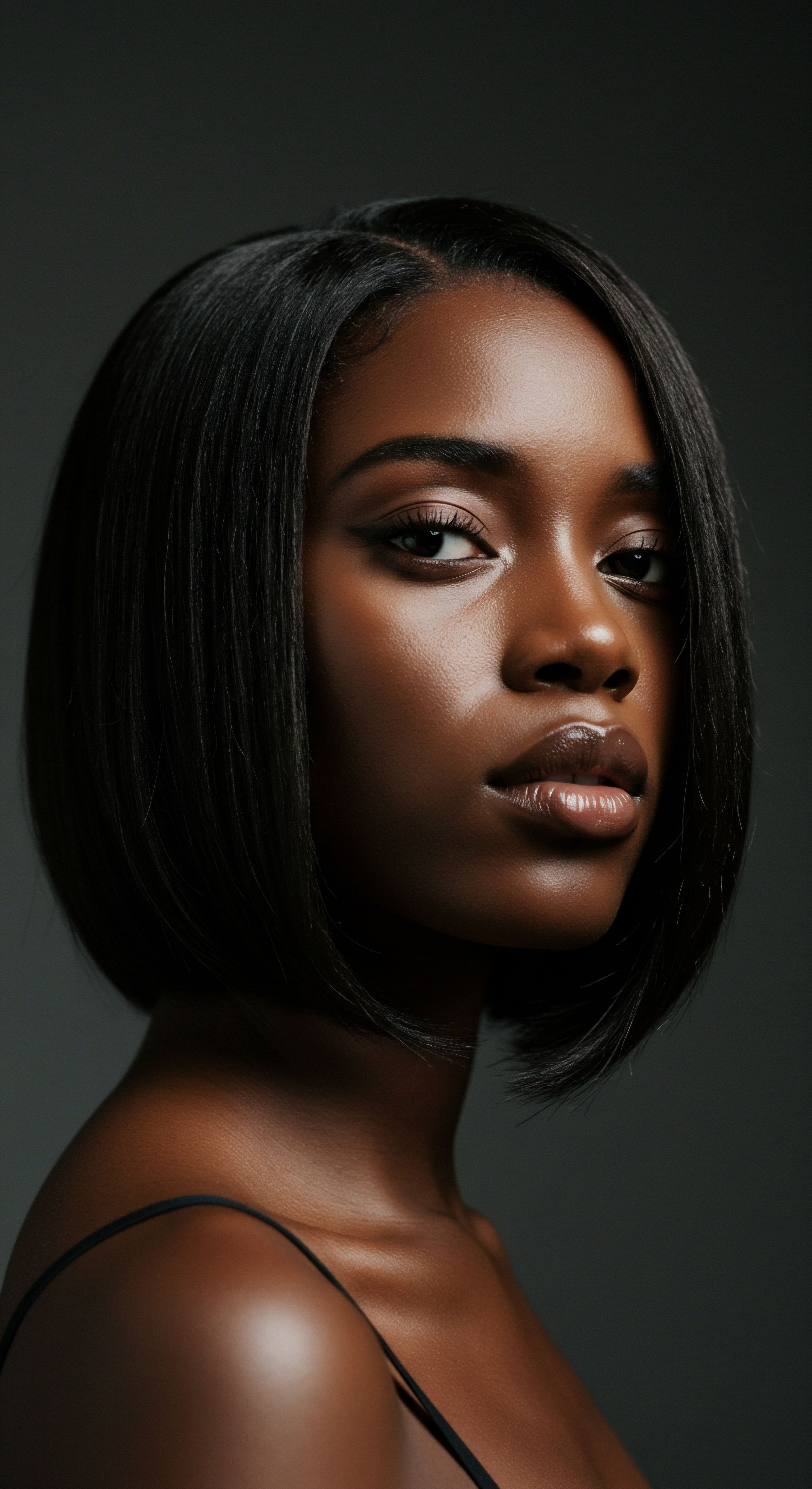
Elasticity and the Genetic Coil
Another inherent property influenced by genetics is Elasticity, the hair’s ability to stretch and return to its original shape without breaking. The intricate twists and turns of curly and coily hair, a direct result of its elliptical follicle shape and asymmetrical keratin distribution, mean these strands are naturally more prone to breakage at their curves. The disulfide bonds, while contributing to curl, also create points of tension.
Understanding this genetic predisposition means adapting styling rituals to minimize stress on the hair. This might involve:
- Finger Detangling or Wide-Tooth Combing ❉ Reducing mechanical stress on delicate curl patterns.
- Protective Styling ❉ Opting for styles that minimize manipulation and shield the hair from environmental stressors.
- Protein and Moisture Balance ❉ Providing the hair with both strengthening protein treatments and ample moisture to maintain its suppleness and prevent brittleness.
The protein Keratin-Associated Proteins (KAPs) are vital structural components of hair, working alongside keratin to provide strength and resilience. The ratio between intermediate filament proteins (IFPs) and KAPs determines the type of cortex formed, influencing the hair’s structural integrity and its ability to withstand styling. Genetic variations affecting the quantity or quality of these proteins can directly impact a strand’s elasticity.

The Hair Growth Cycle and Genetic Influences
Hair growth follows a cyclical pattern ❉ anagen (growth), catagen (transition), and telogen (resting). While these phases are universal, genetic factors can influence their duration and efficiency. For instance, variations in the WNT10A gene have been associated with conditions like woolly hair syndrome, characterized by abnormally tightly coiled hair and an inability to grow long scalp hair due to a shortened anagen phase. This directly impacts the achievable length and density of hair, guiding care rituals towards maximizing retention and minimizing shedding.
A table outlining how genetic predispositions translate into specific hair care considerations:
| Genetic Trait Elliptical Follicle Shape |
| Hair Characteristic High curvature, prone to dryness, frizz |
| Care Ritual Adjustment Prioritize deep conditioning, gentle detangling, sealing moisture. |
| Genetic Trait Raised Cuticle (Higher Porosity) |
| Hair Characteristic Quick moisture absorption, quick moisture loss |
| Care Ritual Adjustment Layering hydrators, using heavier creams/butters, regular deep treatments. |
| Genetic Trait Asymmetrical Keratin Distribution |
| Hair Characteristic Increased fragility at bends, reduced elasticity |
| Care Ritual Adjustment Minimize manipulation, use protective styles, balance protein and moisture. |
| Genetic Trait Shorter Anagen Phase (e.g. WNT10A variants) |
| Hair Characteristic Limited growth potential, shorter maximum length |
| Care Ritual Adjustment Focus on scalp health, growth-stimulating practices, retention methods. |

Relay
The story of hair curl extends far beyond individual biology, reaching into the collective memory of human migration, adaptation, and cultural expression. To consider how genetics sculpt hair curl is to recognize a deep, interconnected history, where science and societal perspectives intertwine. This final exploration delves into the broader implications of genetic hair diversity, examining how these inherited traits have been perceived, celebrated, or challenged across time and place.

Hair Curl as an Evolutionary Signature
The prevalence of specific hair textures in different populations is not coincidental; it represents a fascinating chapter in human evolution. For instance, the tightly coiled hair predominantly found in populations of African descent is theorized to have provided significant adaptive advantages in equatorial climates. This curl pattern creates a natural buffer, trapping air close to the scalp, which helps regulate temperature and offers protection from intense solar radiation. This biological adaptation underscores how our genetic makeup responds to environmental pressures, shaping physical traits over millennia.
Conversely, the straight, thick hair prevalent in East Asian populations, often influenced by variants in the EDAR gene, may have offered benefits in colder, drier climates, providing better insulation against the cold. The very architecture of our hair, therefore, can be viewed as a living record of our ancestors’ journey across diverse landscapes.

Population Specific Genetic Markers
Research in genomics continues to pinpoint specific genetic markers that account for hair texture differences across populations. While the TCHH gene is a notable contributor to hair curl variations, particularly in people of Northern European ancestry, its influence is but one piece of a larger puzzle.
For example, a study identified that the EDARV370A Variant of the EDAR gene, common in East Asian populations (present in over 90% of Han Chinese, 70% of Japanese and Thai people, and 60-90% of Native Americans), is almost nonexistent in people of African and European descent. This variant leads to enhanced EDAR signaling, resulting in coarser, thicker, and straighter hair by influencing hair follicle size and cross-sectional shape. This specific genetic difference illustrates how certain alleles become highly prevalent within distinct populations due to selective pressures or founder effects, leading to observable differences in hair characteristics.
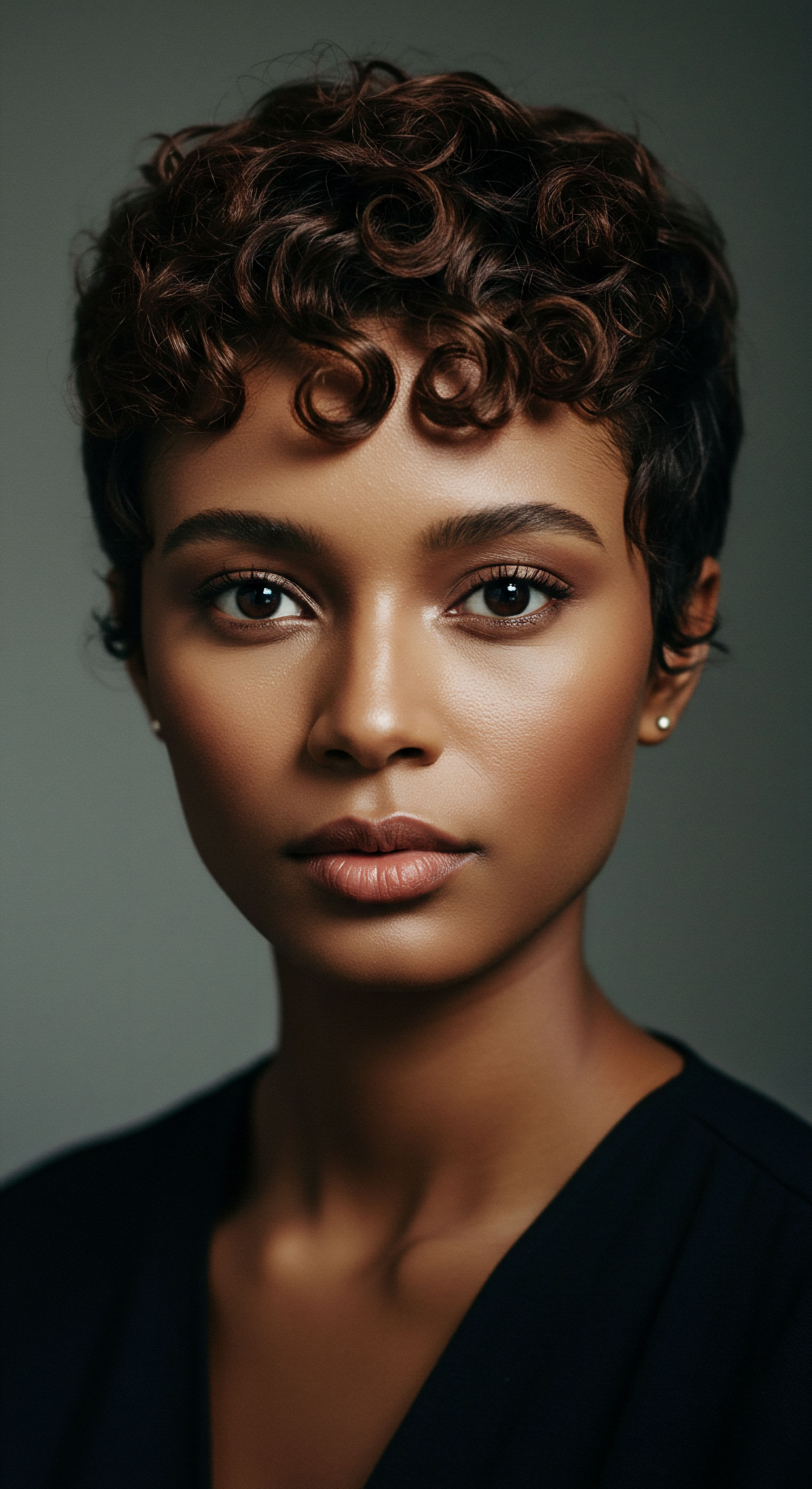
The Social and Cultural Dimensions of Inherited Hair
Beyond its biological function, genetically determined hair curl has profoundly shaped human societies and individual identities. Throughout history, and in various cultures, hair texture has carried immense social and symbolic weight. In many African and diasporic cultures, textured hair has been revered as a symbol of beauty, strength, spirituality, and connection to ancestry. Elaborate styling traditions, passed down through generations, celebrate the versatility and unique qualities of coils and curls.
However, the colonial past and prevailing Eurocentric beauty standards have often cast textured hair in a negative light, leading to systemic discrimination and the pressure to conform to straight hair ideals. This has led to practices of chemical relaxing and heat straightening, often with detrimental effects on hair health. The renewed movement to embrace natural textured hair is a powerful cultural reclamation, recognizing the beauty and resilience of genetically inherited hair.
Genetically determined hair texture serves as a powerful cultural marker, shaping identity and influencing societal perceptions across diverse communities.
The concept of “good hair” in some communities, often implicitly or explicitly tied to looser curl patterns or straightness, stands as a poignant example of how genetic traits can become entangled with social hierarchies and internalized biases. This cultural conditioning highlights the ongoing societal dialogue around hair, urging a broader appreciation for the entire spectrum of human hair diversity.

Interconnectedness Beyond the Strand
The genetic underpinnings of hair curl are not isolated; they are part of a larger biological system. The same genes influencing hair morphology can also affect other seemingly unrelated traits, a phenomenon known as Pleiotropy. For instance, the EDAR gene, while influencing hair thickness and straightness, also plays a role in the development of sweat glands and teeth. This interconnectedness means that understanding hair genetics can sometimes offer clues to broader biological patterns within an individual or a population.
The study of hair genetics is an evolving field, with researchers continuously identifying new genetic variants and their complex interactions. This ongoing scientific pursuit offers a deeper appreciation for the biological mechanisms that give rise to our diverse hair textures, moving beyond simplistic explanations to a more holistic view of human variation. The journey to understand hair curl is thus a multi-layered one, traversing scientific discovery, historical context, and the vibrant tapestry of human identity.
An interesting, perhaps less commonly discussed, data point comes from a study on hair thickness and the EDAR gene. The EDAR gene, particularly the EDARV370A variant, is highly prevalent in East Asian populations, contributing to their characteristically thicker, straighter hair. This variant is found in over 90% of Han Chinese individuals.
This high frequency suggests a strong selective pressure, potentially linked to environmental adaptations over tens of thousands of years. While straight hair is often perceived as a singular trait, this example underscores a specific genetic mechanism and its disproportionate presence within a particular ancestry group, highlighting the specific biological drivers behind macro-level hair diversity.
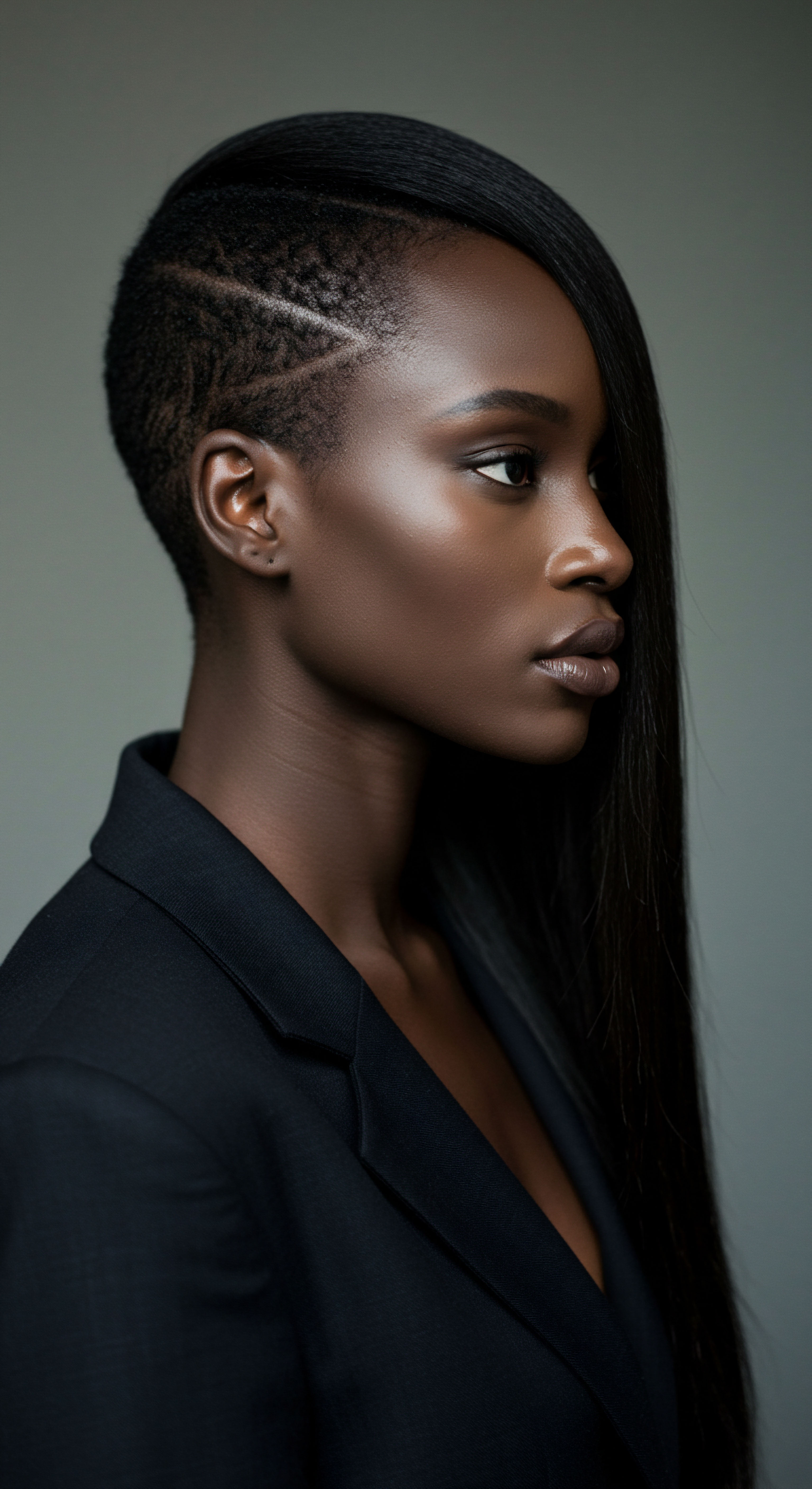
Reflection
As we conclude our exploration into the genetic foundations of hair curl, we find ourselves standing at the crossroads of science, history, and personal narrative. The gentle curve of a strand, the tight spring of a coil, each tells a story not only of inherited biological code but also of journeys through time, across continents, and within individual lives. To truly know one’s hair is to honor this deep lineage, to recognize the intricate dance of genes and environment that shapes its very being.
This understanding moves us beyond superficial perceptions, inviting a deeper appreciation for the inherent beauty and resilience of every unique hair pattern. It is a quiet call to listen to our hair, to care for it with informed tenderness, and to celebrate the remarkable diversity that is etched into our very strands.
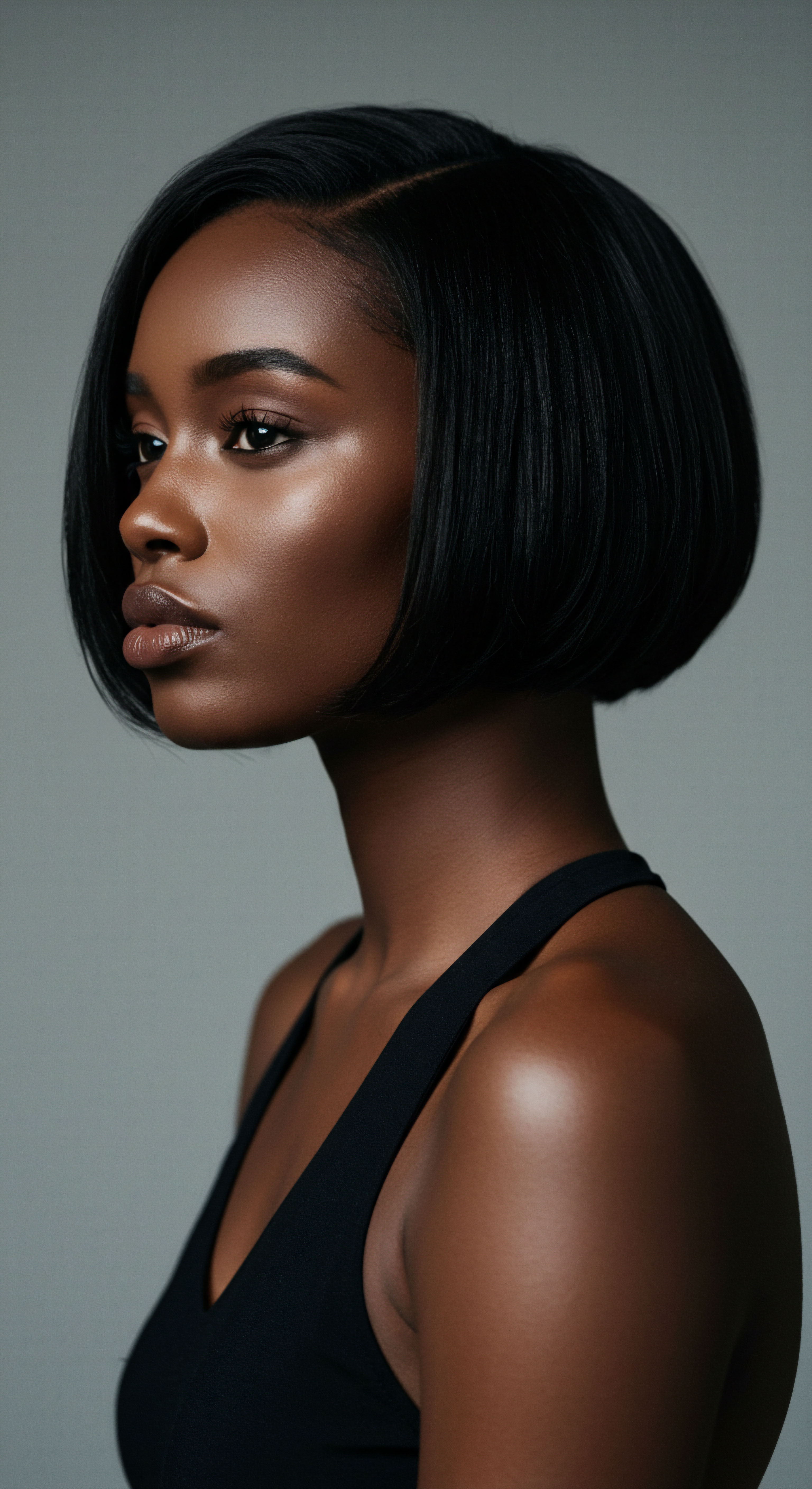
References
- Adoukè, D. (2022). All you need to know about afro hair. Doria Adoukè.
- AncestryDNA. (n.d.). Hair Strand Thickness. AncestryDNA® Traits Learning Hub.
- AncestryDNA. (n.d.). Hair Type. AncestryDNA® Traits Learning Hub.
- Bertolino, P. (2021). The Biology and Genetics of Curly Hair. ResearchGate.
- CurlyEllie. (2024). It’s all in the Genes. CurlyEllie.
- CurlyTools. (2024). Why Does Curly Hair Curl? Find Your Answer Here! CurlyTools.
- Ducommun, L. (2023). The Genetic Secrets Behind Your Hair Texture. Australian Salon Discounters.
- Fujimoto, A. et al. (2008). Enhanced ectodysplasin-A receptor (EDAR) signaling alters multiple fiber characteristics to produce the East Asian hair form. Human Mutation.
- Jean Paul Mynè. (n.d.). KERATIN PLUS EMPOWER CURL DEFINING SHAMPOO. Jean Paul Mynè.
- LUS Brands. (2019). What Makes Curly Hair Curly? LUS Brands.
- Medical News Today. (2017). Curly or straight ❉ What determines hair shape? Medical News Today.
- MedlinePlus. (2022). Is hair texture determined by genetics? MedlinePlus.
- Mou, C. et al. (2008). Enhanced ectodysplasin-A receptor (EDAR) signaling alters multiple fiber characteristics to produce the East Asian hair form. Human Mutation.
- Paramount Beauty. (2015). Learn the Science of Curly Hair. Paramount Beauty.
- Pinto, R. M. et al. (2014). The structure of people’s hair. Philosophical Transactions of the Royal Society A.
- RSC Publishing Home. (2017). Changing the shape of hair with keratin peptides. RSC Publishing Home.
- SNPedia. (2010). Hair curliness. SNPedia.
- Tame It Curl Haus. (2024). The Anatomy of a Curl. Tame It Curl Haus.
- The Belgravia Centre. (n.d.). Hair Types and Race Differences. The Belgravia Centre.
- Wang, S. (2013). Why ‘Good Hair’ Matters. Harvard Medical School.
- Xcode Life. (2025). Is Curly Hair Genetic? How DNA Affects Your Hair Type. Xcode Life.